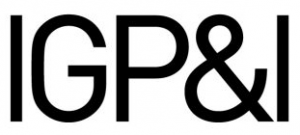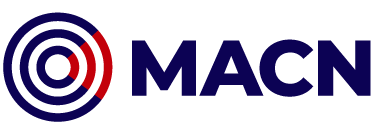September is approaching and it is time to get ready for the seasonal risk of Brown Marmorated Stink Bug in Australia and New Zealand. Vessel operators must ensure that cargo shipped from designated target risk countries fully complies with the relevant biosecurity treatment and certification requirements.

Preparing for the stink bug season
Published 21 August 2025
Why is the Brown Marmorated Stink Bug a concern?
The Brown Marmorated Stink Bug (BMSB) is an invasive agricultural pest that feeds on a wide range of fruit and vegetable crops, causing significant damage. Native to East Asia, it has spread to North America and Europe, but is not yet established in countries like Australia, New Zealand, and Chile.
Like the Flighted Spongy Moth Complex, the BMSB is a “hitchhiker pest” that can travel via international shipping. During colder months, adult bugs seek shelter in cargo such as vehicles, machinery, containers, and parts - making oceangoing vessels a key pathway for accidental introduction.
Read more here: Flighted Spongy Moth Complex
Who is responsible?
BMSB regulations primarily place responsibility on importers, requiring them to ensure that specific types of cargoes are properly treated and certified before being shipped from countries with known BMSB populations. However, vessel operators could also be directly affected.
Non-compliant or untreated cargo can result in a vessel being denied port entry, leading to costly delays and operational disruptions. It is therefore essential that vessel crews are familiar with seasonal biosecurity measures and remain alert for any signs of BMSB or other exotic pests onboard. Any suspected sightings must be reported immediately to quarantine authorities at the destination port.
Unsure if the insect onboard is a Brown Marmorated Stink Bug? Click HERE to find out.
New Zealand and Australia have joined forces to keep the bug out
In response to the rapid expansion of BMSB throughout Europe and North America, New Zealand and Australia continue to enforce strict seasonal measures to keep the stink bug out. While their efforts are coordinated, differences remain in national regulations and port-of-entry procedures.
The 2025-26 BMSB risk season starts on 1 September 2025 and all stakeholders, including vessel masters and crew, should be familiar with the relevant requirements for their trade. For the most up-to-date information, refer to the official BMSB resources:
The MPI website includes a useful table comparing key differences in how New Zealand and Australia manage BMSB risks.
Quick facts for the 2025–26 season
The overall regulatory framework and seasonal BMSB measures implemented by the two countries remains largely unchanged, and the following should be noted:
Targeted goods:
Measures apply to certain goods, such as vehicles, machinery parts, tyres, wood articles, and other items, shipped from designated risk countries between 1 September 2025 and 30 April 2026 (inclusive).
Goods in fully enclosed containers that have been loaded and sealed prior to 1 September may be exempted from the BMSB management requirements.
The shipped onboard date on the bill of lading usually determines whether goods fall within the risk period.
Target risk countries:
New Zealand and Australia commonly identify the following 38 countries as target risk countries for BMSB management: Albania, Andorra, Armenia, Austria, Azerbaijan, Belgium, Bosnia and Herzegovina, Bulgaria, Canada, Croatia, Czechia, France, Georgia, Germany, Greece, Hungary, Italy, Japan, Kazakhstan, Kosovo, Liechtenstein,Luxembourg, North Macedonia, Moldova, Montenegro, Netherlands, Poland, Portugal, Romania, Russia, Serbia, Slovakia, Slovenia, Spain, Switzerland, Türkiye, Ukraine, United States.
Additionally:
Australia includes Uzbekistan as a target risk country, and specifies that vessels from Japan will receive heightened vessel surveillance only.
Australia identifies United Kingdom, China, Japan, and South Korea as emerging risk countries. Vessels from these countries may be subject to random inspections.
Australia enforces heightened surveillance for roll-on/roll-off (ro-ro) vessels that call at, load, or transship in target risk countries, as well as in China, Japan, and South Korea.
New Zealand maintains particular focus on containers imported from Italy.
BMSB treatment requirements:
Australia and New Zealand have aligned their BMSB treatment rates to simplify compliance for shippers, exporters, importers, and treatment providers. A joint list of approved offshore BMSB treatment providers, administered by DAFF, has been established.
New Zealand and Australia will not conduct treatments for each other, i.e., goods bound for New Zealand cannot be treated for BMSB in Australia, and vice versa.
Goods eligible for BMSB treatment exemptions may differ between the two countries.
New Zealand requires all treatment to be completed prior to arrival.
Australia, however, may permit on-arrival treatment for goods shipped in hard side containers.
Non-compliant goods, such as those untreated or treated by unapproved providers, are likely to be denied discharge or directed for export.
Unwanted in Chile too
Similar BMSB management measures apply to vessels arriving in Chile, where the Chilean Agriculture and Livestock Service (Servicio Agricola y Ganadero (SAG)) has declared BMSB as a quarantine pest. SAG requires inspection and fumigation of certain imported products, particularly those shipped from the United States.
The SAG website provides an overview of Chile’s actions to manage the BMSB risk in English.
Be prepared
While importers are responsible for ensuring cargo is treated and certified before departure from target risk countries, vessel crews must stay informed about seasonal biosecurity measures, remain alert for signs of BMSB or other exotic pests onboard, and report any suspected sightings to quarantine authorities at the destination port.
As the BMSB risk status is reviewed throughout the season, the countries’ measures may be updated based on new detections or emerging threats. To ensure compliance, we recommend confirming current requirements with local vessel agents in advance.


